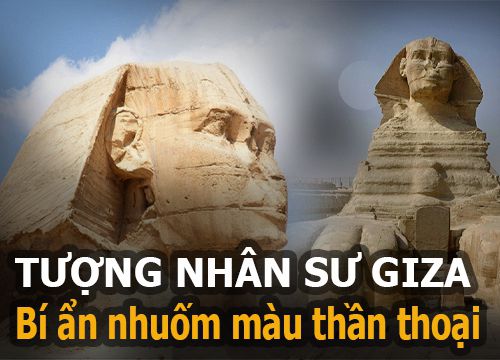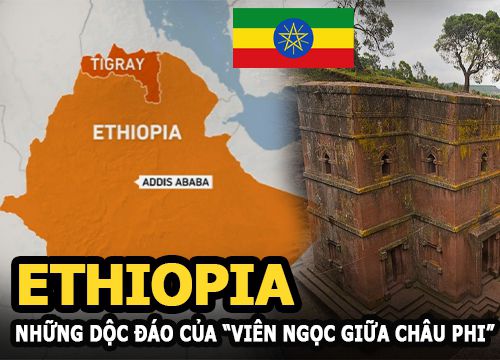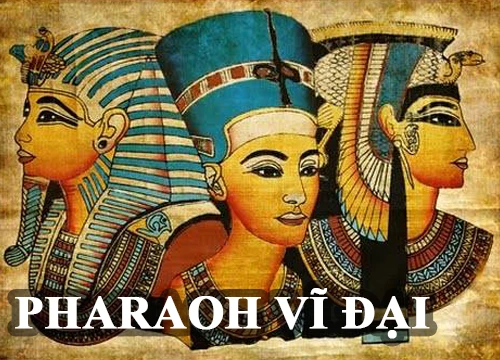Egypt: Fire in a textile factory, nearly 20 casualties

5 | 0 Discuss | Share
Where does the Nile River originate? The question seems to be quite simple, but it has fascinated explorers and geographers to find the answer for thousands of years.
The discovery of the origin of the Nile (or Nile) was one of the most important questions of 19th century Europe. This has caused quite a few talented explorers to rush into the search only to suffer injuries or die.
According to experts, although many people have claimed to have discovered the origin of the Nile River. But up to now, this problem is still a seemingly simple but very difficult question. No answer found!
The backbone of Egyptian civilization
The Nile (or Nile) is geographically located in Africa, acting as the main river of the North African region. With a total length of 6,853km, the Nile was once ranked as the longest river in the whole world. However, a number of studies and data showed in 2007 that this river only ranked second, the first place belongs to the Amazon River in South America.
The Nile River played an important role in the formation and development of some of the most ancient civilizations. Without the huge amount of water from it, the ancient Egyptians could never have amassed the wealth and power needed to build the pyramids and control vast territories for 5,000 years. before.
Herodotus, the famous Greek historian from the 5th century B.C.E., wondered about the origin of the great water of the Nile. Pharaoh Ptolemy II Philadelphus , also interested in the origin of the Nile, sent an expedition to determine the origin of the Blue Nile.
"The Egyptians were quite interested in finding the source of the Nile because it affected their agriculture," said Angela Thompsell, a history expert at the State University of New York.
Like many rivers thousands of kilometers in length, the Nile has several major tributaries. Its two main streams, the Blue Nile and the White Nile, join at Khartoum before continuing north, through Sudan into Egypt.
Scottish explorer James Bruce claimed to be the first to find the source of the Blue Nile in 1770 when he arrived at a swamp and waterfall in Tis Abay, Ethiopia. However, according to historical records, a Spanish monk named Pedro Paez actually visited the area in 1618.
The Blue Nile flows from Lake Tana, providing up to 80% of its water when the two main streams meet at Khartoum. However, the White Nile is longer and its origin is less known because it flows from deep within the African continent. Most of the famous expeditions of the 19th century focused their efforts on finding the source of the White Nile.
Famous expeditions
Finding the source of the White Nile is one of the most fascinating things for explorers. In 1855, Richard Francis Burton and naturalist John Hanning Speke hired Africans as guides, cooks and interpreters to explore the Nile. As they approached Berbara in Somalia, they were attacked by locals. Speke was briefly captured, wounded before escaping. Meanwhile, Burton was stabbed through both cheeks.
Despite that failure, the two characters mentioned above continued to explore the Nile in 1856. However, like the previous time, they had a bad start. Both Burton and Speke contracted several illnesses during the trip, including malaria. During the trip, some of the people they hired even voluntarily left the group. However, the team reached Lake Tanganyika. Burton is considered the first European to see the lake because Speke was then temporarily blind.
They discovered that Tanganyika could not be the source of the White Nile because there was a large river flowing into it. However, although Speke recovered his eyesight, Burton was too exhausted at the time. Speke continued his journey towards Lake Victoria and upon arrival he confirmed that it was the source of the White Nile.
Burton objected to this and demanded proof. "They basically hated each other from that point on," says Thompsell. Speke made another expedition to Lake Victoria in 1860 but failed to map the entire area around Lake Victoria.
In 1864, just before Speke was due to argue with Burton, he died in an accident (or possibly suicide).
Soon after, another explorer, David Livingstone, went to find the source of the Nile, but he went missing in the late 1860s. After that, Henry Morton Stanley - a Welsh-American explorer - went up. the way to discover the source of the White Nile and find Livingstone. Stanley realized that Livingstone was too ill. A few years later Livingstone died.
Stanley began another expedition in the mid-1870s. Finally, he concluded that Lake Victoria had a single outlet that drained into the White Nile via Rippon Falls and Lake Albert. Thus, he confirmed Speke's earlier discovery. During his exploration of the great lakes of Africa, he also discovered that they were the headwaters of the Congo River.
Questions surrounding the origin of the Nile
Despite the exploration results, many scientists believe that until now the origin of the White Nile River is not fully understood. "The mystery of the Nile's origins has been a challenge for three millennia," said Christopher Ondaatje, an explorer who wrote the book Journey to the Source of the Nile.
In 1996, Ondaatje spent three months traveling along the Nile and across the great lakes of Africa. He said that the claim that "Lake Victoria is the source of the White Nile" ignores the fact that the Kagera River supplies large amounts of water to the lake. The two main tributaries of the Kagera River arise from streams in Burundi and Rwanda.
Ondaatje wrote in an article: "One of the two springs mentioned above is the source of the Nile". At the same time, he also assumes that Speke crossed the Kagera River during his journey but avoids mentioning it.
During his expedition, Ondaatje also made another important discovery. The water of Lake Victoria flows through the Rippon Falls and then flows into Lake Albert. The White Nile flows directly from Lake Albert. However, Ondaatje said 85% of the water in Lake Albert does not come from Lake Victoria, but from the Semliki River, which flows from the Democratic Republic of Congo.
Ondaatje says Speke's discovery is only part of the solution to the puzzle of the Nile's origins. He also said that his discoveries are not yet possible due to political problems and unrest. So, in a sense, the real origin of the Nile is still an unanswered question.
The name of the Nile also has quite interesting origins. The Nile River - the name comes from the Semitic languages. At first, it was called Nahal, later it was named Neilos, which means "valley river". The Egyptians all thought that the Nile was the river of life, not only because it brought the river to nourish the land of Egypt, but also because of its immense civilizational and cultural values.
Nile water protects the land of Egypt, helps against soil erosion, desert encroachment. And especially the Nile River is the main source of fresh water for the whole land of Egypt, a source of fresh water that makes this land rich. And one thing, history must be very grateful to the Nile, because that is where the Egyptians began to create a brilliant civilization, a civilization that became the pride of mankind.
The Egyptians would not have been able to settle in that mythical land without the Nile. In other words, the Nile is the priceless gift that nature has bestowed on the Egyptians. Every flood season, after the water recedes, the Nile will leave a layer of black alluvium that the Egyptians called "Ar".
This extremely fertile and annually accreted alluvium is the place of cultivation, helping the Egyptians always have unbelievable harvests. The Nile River and pyramids are considered symbols of Egypt. The Nile River played a very important role in the construction of the pyramids in Egypt. To be able to transport blocks of stone weighing tens of tons, mainly the Egyptians took advantage of the power of the Nile river to bring rocks from upstream to downstream.
The strange direction of the Nile River
After stubbornly pushing north for most of its route, the Nile takes a surprising turn in the middle of the Sahara. With the main tributaries finally merging, the "complete" Nile continues to flow north. It passed through Sudan for a long time. However, it then turned abruptly to the southwest. The Nile changes course for about 300 km (186 mi), as if it were returning to Central Africa instead of emptying into Egypt.
Of course, the Nile eventually got back on track and overtook Egypt as we know it today. But why did it take such a big detour? This feature was formed by a giant reef called Nubian Swell.
Nile crocodile
Referring to the Nile, we cannot help but mention the Nile crocodile. According to the Encyclopedia Britannica, they inhabit most areas of the river. This is one of the largest crocodiles on Earth. Up to 6m in length and about 250kg in weight for an adult.
They are carnivores whose main food is fish. However, their diet is not fixed to a specific species. So they can attack any creature within range and consider it as prey, including humans. An estimated 200 people die each year from Nile crocodile attacks.
However, in ancient times, death caused by crocodiles was a blessing. In Egyptian mythology, the god Osiris was betrayed by his brother Set. Set of Osiris donkey lying in a coffin and then thrown into the Nile. Osiris' wife Isis found his body and tried to bring him back to life. But Set once again stole Osiris' body and chopped it into pieces and scattered it throughout Egypt. Isis still recovered every piece of Osiris' body. But only his penis could not be found because it was eaten by a Nile crocodile.
Therefore, the crocodiles here are related to the fertility god Sobek. They consider the Nile crocodile to be the embodiment of Sobek - the god of fertility on earth. Therefore, for the ancient Egyptians, anyone who was eaten by a Nile crocodile "is considered lucky to have a happy death."
Suez Canal - The Great Dream of the Pharaohs  team youtuber15:31:27 03/05/2021This more than 193km long man-made canal was built by the Suez Canal Company between 1859 and 1869, but the original idea belonged to the ancient Egyptians - evident However, the goal of both is the same: to open a route linking east and west, serving global trade. The project... can please the...
team youtuber15:31:27 03/05/2021This more than 193km long man-made canal was built by the Suez Canal Company between 1859 and 1869, but the original idea belonged to the ancient Egyptians - evident However, the goal of both is the same: to open a route linking east and west, serving global trade. The project... can please the...

5 | 0 Discuss | Share

3 | 0 Discuss | Share

5 | 0 Discuss | Share

4 | 0 Discuss | Share

2 | 0 Discuss | Share





5 | 0 Discuss | Report